动态分析(DynamicAnalyzer)基础理论
- 格式:ppt
- 大小:7.64 MB
- 文档页数:86
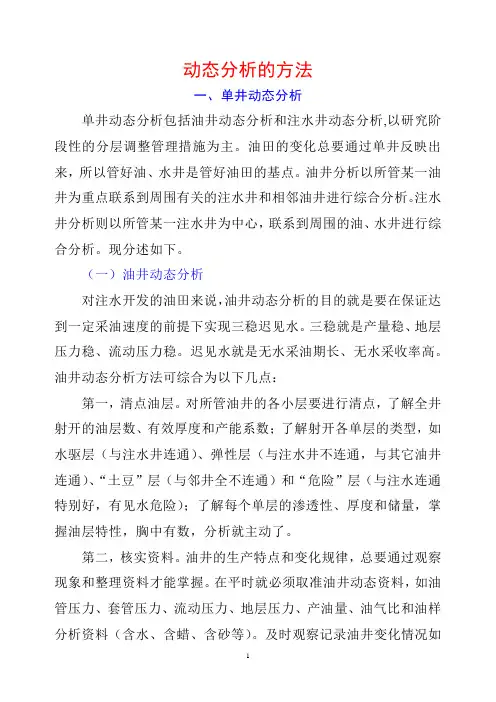
动态分析的方法一、单井动态分析单井动态分析包括油井动态分析和注水井动态分析,以研究阶段性的分层调整管理措施为主。
油田的变化总要通过单井反映出来,所以管好油、水井是管好油田的基点。
油井分析以所管某一油井为重点联系到周围有关的注水井和相邻油井进行综合分析。
注水井分析则以所管某一注水井为中心,联系到周围的油、水井进行综合分析。
现分述如下。
(一)油井动态分析对注水开发的油田来说,油井动态分析的目的就是要在保证达到一定采油速度的前提下实现三稳迟见水。
三稳就是产量稳、地层压力稳、流动压力稳。
迟见水就是无水采油期长、无水采收率高。
油井动态分析方法可综合为以下几点:第一,清点油层。
对所管油井的各小层要进行清点,了解全井射开的油层数、有效厚度和产能系数;了解射开各单层的类型,如水驱层(与注水井连通)、弹性层(与注水井不连通,与其它油井连通)、“土豆”层(与邻井全不连通)和“危险”层(与注水连通特别好,有见水危险);了解每个单层的渗透性、厚度和储量,掌握油层特性,胸中有数,分析就主动了。
第二,核实资料。
油井的生产特点和变化规律,总要通过观察现象和整理资料才能掌握。
在平时就必须取准油井动态资料,如油管压力、套管压力、流动压力、地层压力、产油量、油气比和油样分析资料(含水、含蜡、含砂等)。
及时观察记录油井变化情况如结蜡软硬、原油乳化、出砂、油井间歇出液现象。
新的变化情况出现后,要先从地面查清原因,弄清情况,落实资料,然后再进行动态分析。
第三,联系历史。
油井的每一变化都是有其根源的,要结合油井开采历史进行分析。
一方面要熟悉井史,结合钻井、固井、诱喷等有关情况进行分析。
另一方面要应用采油曲线,研究每个开采时期的生产指标变化特点,由它的过去,分析它的现在,由它的现在预测它的将来。
分析哪些是一贯的规律,哪些是突然的变化,便于综合考虑,得出系统概念。
第四,对比邻井。
首先要和注水井对比,如果见到注水效果或者见水,就要顺着连通层追踪到注水井,综合分析。
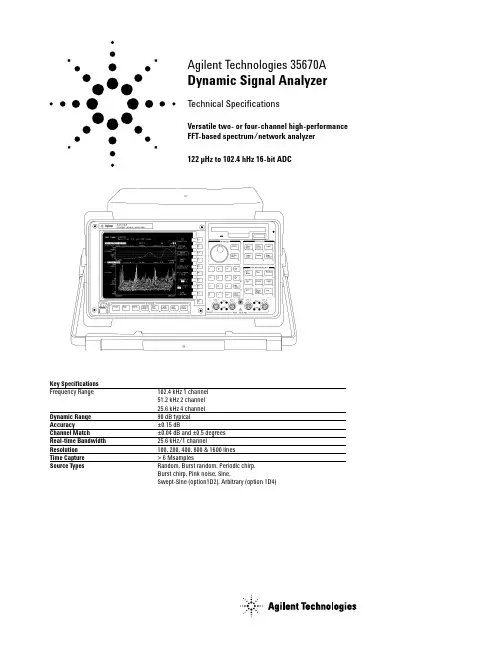
Agilent Technologies 35670A Dynamic Signal Analyzer Technical SpecificationsVersatile two- or four-channel high-performance FFT-based spectrum/network analyzer122 µHz to 102.4 hHz 16-bit ADCSignal Averaging (FFT Mode)Average Types (1 to 9,999,999 averages)RMS TimeExponentialRMS Exponential Peak HoldTimeAveraging ControlsOverload RejectFast Averaging On/OffUpdate Rate SelectSelect Overlap Process PercentagePreview Time RecordMeasurement ControlStart MeasurementPause/Continue MeasurementTriggeringContinuous (Freerun)External (Analog or TTL Level)Internal Trigger from any ChannelSource Synchronized TriggerGPIB TriggerArmed TriggersAutomatic/ManualRPM StepTime StepPre- and Post-Trigger Measurement DelayTachometer Input:±4V or ±20V range40 mv or 200 mV resolutionUp to 2048 pulses/revTach hold-off controlSource OutputsRand om BurstRand omPeriodic Chirp Burst ChirpPink Noise Fixed SineNote: Some source types are not available foruse in optional modes. See option description fordetails.Input ChannelsManual Range Anti-alias Filters On/OffUp-Only Auto Range AC or DC CouplingUp/Down Auto Range LED Half Range andOverload IndicatorsFloating or Grounded A-Weight Filters On/OffT ransducer power supplies (4 ma constant current)Frequency20 Spans from 195 mHz to 102.4 kHz (1 channel mode)20 Spans from 98 mHz to 51.2 kHz (2 channel mode)Digital zoom with 244 µHz resolution throughoutthe 102.4 kHz frequency bands.Resolution100, 200, 400, 800 and 1600 linesWindowsHann UniformFlat Top Force/ExponentialMath+,-,*, / ConjugateMagnitude Real and ImaginarySquare Root FFT, FFT-1LN EXP*jωor /jω PSDDifferentiation A, B, and C weightingIntegration Constants K1 thru K5Functions F1 thru F5AnalysisLimit Test with Pass/FailData Table with Tabular ReadoutData EditingTime Capture FunctionsCapture transient events for repeated analysis in FFT, octave, order, histogram, or correlation modes (except swept-sine). Time-captured data may be saved to internal or external disk, or transferred over GPIB. Zoom on captured data for detailed narrowband analysis. Up to6 Msamples of data can be saved inthe standard unit.Data Storage FunctionsBuilt-in 3.5 in., 1.44-Mbyte flexible disk also supports 720-KByte disks, and 2 Mbyte NVRAM disk. Both MS-DOS® and HP-LIF formats are available. Data can be formatted as either ASCII or Binary (SDF). The 35670A provides storage and recall from the internal disk, internal RAM disk, internal NVRAM disk, or external GPIB disk for any of the following information: Instrument Setup States Trace DataUser-Math LimitDataTime Capture Buffers Agilent Instrument BASIC Waterfall Display Data ProgramsData Tables Curve Fit/Synthesis TablesInterfacesGPIB (IEEE-488.1 and 488.2)ParallelRS-232C SerialHard-Copy OutputTo Serial or Parallel HP-GL Plotters (PCL5e)To Raster PrintersTo Serial or Parallel HP-GL PrintersTo Disk File (Supports Raster Printer,HP-GL Plotter, and HP-GL Printer)Time StampGPIB CapabilitiesListener/Talker (Direct control of plotters, printers, disk drives)Conforms to IEEE 488.1/488.2Conforms to SCPI 1992Controller with Agilent Instrument Basic option Standard Data Format (SDF) Utilities Exchange data between virtually all Agilent Dynamic Signal AnalyzersEasy data transfer to spreadsheetsData transfer to MATRIX X and MatlabSDF utilities run in an external PCCalibration & MemorySingle or Automatic CalibrationBuilt-In Diagnostics & Service Tests Nonvolatile Clock with Time/DateTime/Date Stamp on Plots and Saved Data Files Online HelpAccess to Topics via Keyboard or IndexFanOn/OffMS-DOS®is a U.S. registered trademark ofMicrosoft Corporation.Summary of Featureson Standard InstrumentThe following features are standardwith the Agilent 35670A:Instrument ModesFFT Analysis Histogram/Time Correlation Analysis Time Capture MeasurementFrequency DomainFrequency Response Power SpectrumLinear Spectrum CoherenceCross Spectrum Power SpectralDensityTime Domain (oscilloscope mode)Time Waveform AutocorrelationCross-Correlation OrbitDiagram Amplitude DomainHistogram, PDF, CDFTrace CoordinatesLinear Magnitude Unwrapped PhaseLog Magnitude Real PartdB Magnitude Imaginary PartGroup Delay Nyquist DiagramPhase PolarTrace UnitsY-axis Amplitude: combinations of units, unit value, calculated value, and unit format describey-axis amplitudeUnits: volts, g, meters/sec2, inches/sec2,meters/sec, inches/sec, meters, mils, inches, pascals, Kg, N, dyn, lb, user-defined EUsUnit Value: rms, peak, peak-to-peakCalculated Value: V, V2, V2/Hz, √Hz, V2s/Hz (ESD)Unit Format: linear, dB’s with user selectable dB reference, dBm with user selectable impedance.Y-Axis Phase:degrees, radiansX-Axis:Hz, cpm, order, seconds, user-definedDisplay FormatsSingleQuadDual Upper/Lower TracesSmall Upper and Large LowerFront/Back Overlay TracesMeasurement StateBode DiagramWaterfall Display with Skew, -45 to 45 DegreesTrace Grids On/OffDisplay BlankingScreen SaverDisplay ScalingAutoscale SelectableReference Manual Scale Linear or Log X-Axis Input Range Tracking Y-Axis LogX & Y Scale Markers with Expand and Scroll Marker FunctionsIndividual Trace MarkersCoupled Multi-Trace MarkersAbsolute or Relative MarkerPeak SearchHarmonic MarkersBand MarkerSideband Power MarkersWaterfall MarkersTime Parameter MarkersFrequency Response Markers23Agilent 35670A Specifications* Option AY6 single channel maximum range extends to 102.4 kHz without anti-alias filter protection.** Show All Lines mode allows display of up to 131.1,65.5 and 32.7 kHz respectively. Amplitudes accuracy is unspecified and not alias protected.<-80 dBfs<-80 dBfs0 dBfs, ≤1 MHz 200 kHz with IEPE transducer power supply On)800 Hz Span-51 -41 -31 -21 -11 270.0028 0.0089 0.028 0.089 0.28022.4Amplitude Range (dBVrms / Vrms)51.2 kHz Span 6.4 kHz Span 456Computed Order Tracking - Option 1D0()Maximum Order x Maximum RPM≤60Online (Real Time) 1 Channel Mode 25,600 Hz2 Channel Mode 12,800 Hz4 Channel Mode 6,400 HzCapture Playback 1 Channel Mode 102,400 Hz2 Channel Mode 51,200 Hz4 Channel Mode 25,600 HzNumber of Orders ≤200 5 ≤RPM ≤491,519(Maximum useable RPM is limited byResolution, Tach Pulse Rate,Pulses/Revolutionand Average Mode Settings.)Delta Order1/128 to 1/1Resolution ≤400(Maximum Order) / (Delta Order)Maximum RPM Ramp Rate1000 RPM / second real-time (typical)1000 - 10,000 RPM Run UpMaximum Order 10Delta Order 0.1RPM Step 30 (1 Channel)60 (2 Channel)120 (4 Channel)Order T rack Amplitude Accuracy±1 dB (typical)Real Time Octave Analysis - Option 1D1Standards Conforms to ANSI Standard S1.11 - 1986,Order 3, Type 1-D, Extended and OptionalFrequency RangesConforms to IEC 651-1979 Type 0 Impulse ,and ANSI S1.4Frequency Ranges(at centers)Online (Real Time):Single Channel 2 Channel 4 Channel1/1 Octave 0.063 - 16 kHz 0.063 - 8 kHz 0.063 - 4 kHz1/3 Octave 0.08 - 40 kHz 0.08 - 20 kHz 0.08 - 10 kHz1/12 Octave 0.0997 - 12.338 kHz0.0997 - 6.169 kHz 0.0997 - 3.084 kHzCapture Playback:1/1 Octave 0.063 - 16 kHz 0.063 - 16 kHz 0.063 - 16 kHz1/3 Octave 0.08 - 31.5 kHz 0.08 - 31.5 kHz 0.08 - 31.5 kHz1/12 Octave 0.0997 - 49.35 kHz 0.0997 - 49.35 kHz 0.0997 - 49.35 kHzOne to 12 octaves can be measured and displayed.1/1-, 1/3-, and 1/12-octave true center frequencies related by the formula: f(i+1)/f(i) = 2^(1/n); n=1,3, or 12; Where 1000 Hz is the reference for 1/1, 1/3 Octave, and 1000*2^(1/24) Hz is the referencefor 1/12 octave. The marker returns the ANSI standard preferred frequencies.Accuracy1 Second Stable AverageSingle Tone at Band Center: ≤±0.20 dBReadings are taken from the Linear Total Power Spectrum Bin.It is derived from sum of each filter.1/3-Octave Dynamic Range > 80 dB (typical) per ANSI S1.11-19862 Second Stable AverageTotal power limited by input noise level7General SpecificationsSafety Standards CSA Certified for Electronic Test andMeasurement Equipment per CSAC22.2, NO. 231This product is designed for compliance to:UL1244, Fourth EditionIEC 348, 2nd Edition, 1978EMI / RFI Standards CISPR 11Acoustic Power LpA < 55 dB (Cooling Fan at High Speed Setting)< 45 dB (Auto Speed Setting at 25 °C)Fan Speed Settings of High, Automatic, and Off are available. The Fan Off setting can be enabledfor a short period of time, except at higher ambient temperatures where the fan will stay on. Environmental Operating RestrictionsOperating: Operating: Storage&Disk In Drive No Disk In Drive TransportAmbient Temp. 4 °C to 45 °C 0 °C to 55 °C -40 °C to 70 °C Relative Humidity(non-condensing)Minimum 20% 15% 5%Maximum 80% at 32 °C 95% at 40 °C 95% at 50 °C Vibrations 0.6 Grms 1.5 Grms 3.41 Grms(5 - 500 Hz)Shock 5G(10 mSec 1/2 sine) 5G (10 mSec 1/2 sine) 40G (3 mSec 1/2 sine) Max. Altitude 4600 meters 4600 meters 4600 meters(15,000 ft.) (15,000 ft.) (15,000 ft.)AC Power90 Vrms - 264 Vrms(47 - 440 Hz)350 VA maximumDC Power12 VDC to 28 VDC Nominal200 VA maximumDC Current at 12V standard: <10A typical4 channel: <12A typicalWarm-Up Time 15 minutesWeight 15 kg (33 lb) net29 kg (64 lb) shippingDimensions(Excluding Bail Handle and Impact Cover) Height 190 mm (7.5")Width 340 mm (13.4")Depth 465 mm (18.3")AbbreviationsdBVrms = dB relative to 1 Volt rms.dBfs = dB relative to full scale amplituderange. Full scale is approx. 2 dB below ADCoverload.Typical = typical, non-warranted, performancespecification included to provide generalproduct information.By internet, phone, or fax, get assistance with all your test & measurement needsOnline assistance:/find/assistPhone or FaxUnited States:(tel) 800 452 4844Canada:(tel) 877 894 4414(fax) 905 282 6495China:(tel) 800 810 0189(fax) 800 820 2816Europe:(tel) (31 20) 547 2323(fax) (31 20) 547 2390Japan:(tel) (81) 426 56 7832(fax) (81) 426 56 7840Korea:(tel) (82 2) 2004 5004(fax) (82 2) 2004 5115Latin America:(tel) (305) 269 7500(fax) (305) 269 7599Taiwan:(tel) 0800 047 866(fax) 0800 286 331Other Asia Pacific Countries:(tel) (65) 6375 8100(fax) (65) 6836 0252Email:*******************Product specifications and descriptions in this document subject to change without notice.© Agilent Technologies, Inc. 2003Printed in USA March 21, 20035966-3064E/find/emailupdatesGet the latest information on theproducts and applications you select.Agilent T&M Software and ConnectivityAgilent's Test and Measurement softwareand connectivity products, solutions anddeveloper network allows you to take timeout of connecting your instruments to yourcomputer with tools based on PCstandards, so you can focus on your tasks,not on your connections. Visit/find/connectivityfor more information.Test Equipment Connection Corporation is your single source test & measurement solution. We offer over 400 test equipment manufacturers including Agilent, Tektronix, Anritsu, Rohde & Schwarz, Advantest, Megger, LeCroy, Chroma and Fluke, plus thousands of New, Used, Second Hand, Pre-Owned, Demo, Refurbished, and Reconditioned test equipment products.For over 18 years, we have been providing high quality spectrum analyzers, mobile phone testers, oscilloscopes, network analyzers, service monitors, RF amplifiers, broadband amplifiers, signal generators, OTDR, fusion splicers, and digital multimeters at great savings to over 200,000 customers worldwide. Lease or rent from us, and we can help manage your idle assets using our consignment program. Trade in underutilized test equipment for cash or credit towards the test solutions you need today! TEC offers repair and calibration support for thousands of current and discontinued brands. TEC's GSA Contract #GS-07F-0358U provides lower cost test and measurement equipment to qualifying government contractors and agencies.Click Here to Request an Offer on Your Surplus Test and Measurement Assets Today。
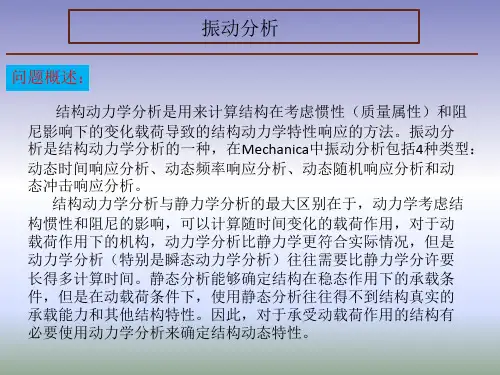
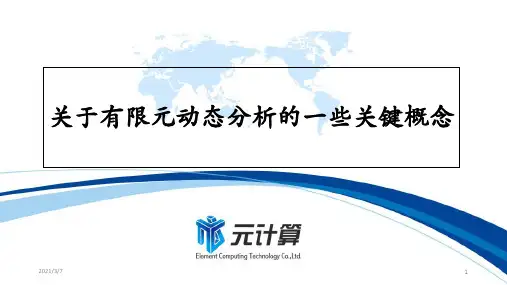
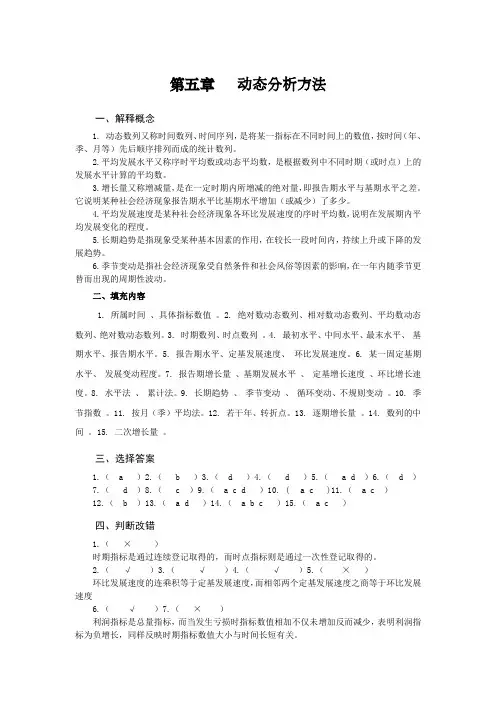
第五章动态分析方法一、解释概念1. 动态数列又称时间数列、时间序列,是将某一指标在不同时间上的数值,按时间(年、季、月等)先后顺序排列而成的统计数列。
2.平均发展水平又称序时平均数或动态平均数,是根据数列中不同时期(或时点)上的发展水平计算的平均数。
3.增长量又称增减量,是在一定时期内所增减的绝对量,即报告期水平与基期水平之差。
它说明某种社会经济现象报告期水平比基期水平增加(或减少)了多少。
4.平均发展速度是某种社会经济现象各环比发展速度的序时平均数,说明在发展期内平均发展变化的程度。
5.长期趋势是指现象受某种基本因素的作用,在较长一段时间内,持续上升或下降的发展趋势。
6.季节变动是指社会经济现象受自然条件和社会风俗等因素的影响,在一年内随季节更替而出现的周期性波动。
二、填充内容1. 所属时间、具体指标数值。
2.绝对数动态数列、相对数动态数列、平均数动态数列、绝对数动态数列。
3. 时期数列、时点数列。
4. 最初水平、中间水平、最末水平、基期水平、报告期水平。
5. 报告期水平、定基发展速度、环比发展速度。
6. 某一固定基期水平、发展变动程度。
7. 报告期增长量、基期发展水平、定基增长速度、环比增长速度。
8. 水平法、累计法。
9. 长期趋势、季节变动、循环变动、不规则变动。
10. 季节指数。
11. 按月(季)平均法。
12. 若干年、转折点。
13. 逐期增长量。
14. 数列的中间。
15. 二次增长量。
三、选择答案1.( a )2.( b )3.( d )4.( d )5.( a d )6.( d )7.( d )8.( c )9.( a c d )10. ( a c )11.( a c )12.( b )13.( a d )14.( a b c )15.( a c )四、判断改错1.(×)时期指标是通过连续登记取得的,而时点指标则是通过一次性登记取得的。
2.(√)3.(√)4.(√)5.(×)环比发展速度的连乘积等于定基发展速度,而相邻两个定基发展速度之商等于环比发展速度6.(√)7.(×)利润指标是总量指标,而当发生亏损时指标数值相加不仅未增加反而减少,表明利润指标为负增长,同样反映时期指标数值大小与时间长短有关。
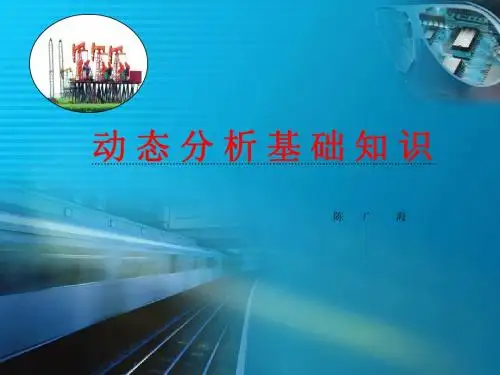
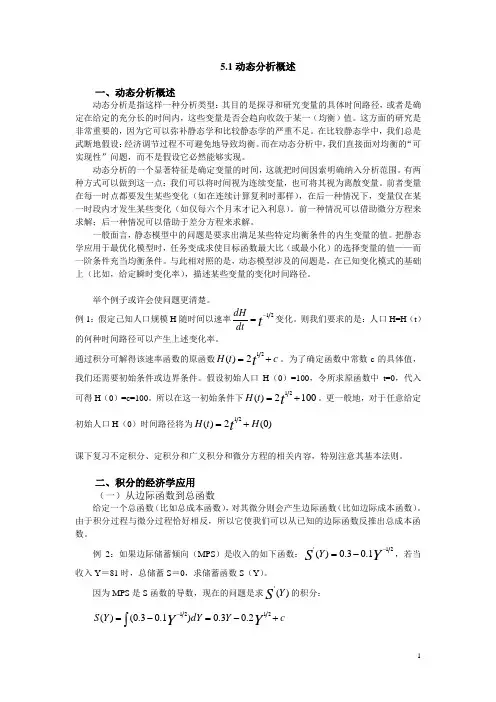
5.1动态分析概述一、动态分析概述动态分析是指这样一种分析类型:其目的是探寻和研究变量的具体时间路径,或者是确定在给定的充分长的时间内,这些变量是否会趋向收敛于某一(均衡)值。
这方面的研究是非常重要的,因为它可以弥补静态学和比较静态学的严重不足。
在比较静态学中,我们总是武断地假设:经济调节过程不可避免地导致均衡。
而在动态分析中,我们直接面对均衡的“可实现性”问题,而不是假设它必然能够实现。
动态分析的一个显著特征是确定变量的时间,这就把时间因索明确纳入分析范围。
有两种方式可以做到这一点:我们可以将时间视为连续变量,也可将其视为离散变量。
前者变量在每一时点都要发生某些变化(如在连续计算复利时那样),在后一种情况下,变量仅在某一时段内才发生某些变化(如仅每六个月末才记入利息)。
前一种情况可以借助微分方程来求解;后一种情况可以借助于差分方程来求解。
一般面言,静态模型中的问题是要求出满足某些特定均衡条件的内生变量的值。
把静态学应用于最优化模型时,任务变成求使目标函数最大比(或最小化)的选择变量的值——而一阶条件充当均衡条件。
与此相对照的是,动态模型涉及的问题是,在已知变化模式的基础上(比如,给定瞬时变化率),描述某些变量的变化时间路径。
举个例子或许会使问题更清楚。
例1:假定己知人口规模H 随时间以速率t dtdH 1-=变化。
则我们要求的是:人口H=H (t )的何种时间路径可以产生上述变化率。
通过积分可解得该速率函数的原函数c t H t+=212)(。
为了确定函数中常数c 的具体值,我们还需要初始条件或边界条件。
假设初始人口H (0)=100,令所求原函数中t=0,代入可得H (0)=c=100。
所以在这一初始条件下1002)(1+=tt H 。
更一般地,对于任意给定初始人口H (0)时间路径将为)0(2)(21H t H t+=课下复习不定积分、定积分和广义积分和微分方程的相关内容,特别注意其基本法则。
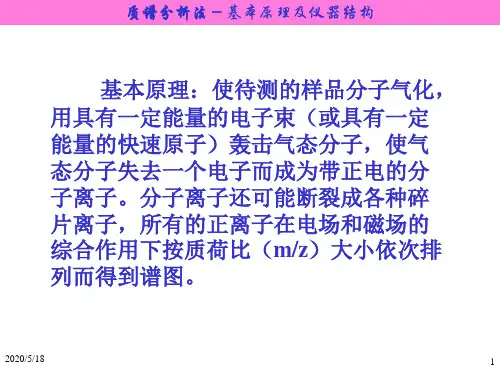

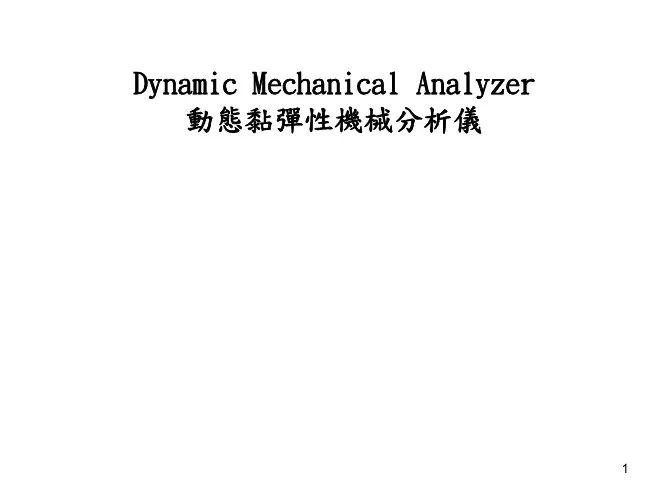
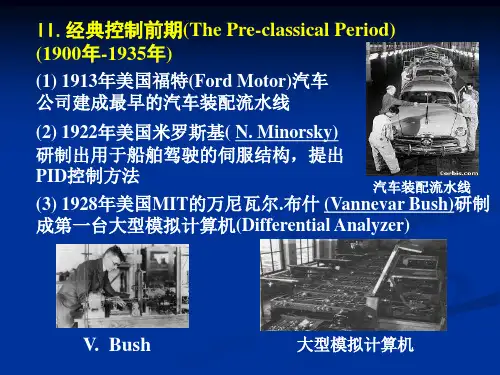
欢迎共阅动态机械分析仪(DMA)使用及管理办法仪器名称:TAInstrumentsDynamicMechanicalAnalyzerDMA2980厂牌:TAInstruments(美商沃特斯),USA型号:DMA2980A.仪器简介「仪器简介」(附件一)B.使用前注意事项及操作步骤1.「管理办法使用安全事项」(附件二)2.「操作步骤」(附件三)C.仪器管理1.校内使用者请填写「预约使用申请书」(附件四)2.校外使用者请填写「贵仪中心委托检测单」(附件五)3.「仪器校正步骤」(附件六)4.「管理、服务人员职责」(附件七)附件一:仪器简介动态机械分析仪(DMA)TAInstrumentsDynamicMechanicalAnalyzerDMA2980DMA是测量样品在程式温度过程中,在一定频率的交变力的作用下的应变行为,测量其储能模量、损耗模量和损耗因数等参数随温度、时间与力的频率的函数关系。
由此可以得到材料的粘弹谱(粘弹性能随温度与频率的变化关系),推断材料的内在结构转变如玻璃化转变、二级相变、链段松弛、蠕变等过程,并可计算相关的转变活化能。
仪器名称:TAInstrumentsDynamicMechanicalAnalyzerDMA2980厂牌:TAInstruments(美商沃特斯),USA•型号:DMA2980DMA原理所有材料在温度变化时都会有物性上的变化,如膨胀收缩、软化、交联硬化等,而为一窥材料在不同温度下的物性,常用的量测工具之一是动态机械分析仪(DynamicMechanicalAnalyzer,DMA)。
一般材料会受到自然界中的三种环境变化影响而改变其物理特性,分别为力量(Force)、频率(Frequency)以及温度(Temperature)。
施加大小不同的力量於材料时,材料特性会有所不同;施力的频率不同,材料特性亦有所不同,施力频率高则材料会变得更为坚硬,施力频率低则材料会较为柔软;相较之下,温度的变化即更为显而易见,因为所有材料同时拥有黏性(Viscosity)与弹性(Elasticity)的特性,不同材料的差别仅在於两者的比例不同而已。
在小比表面样品测试方面的动态法与静态法分析对于小比表面积样品,如电池材料、有机材料、生物材料、金属粉体、磨料等空隙度微小的材料,由于吸附量微小,静态法测试的结果较含有风热助脱装置和检测器恒温装置的高精度动态法仪器误差大。
对静态法为什么在小比表面样品测试方面精度难以保证,原因如下:以比表面积1m2/g的样品为例,该样品0.5g对氮气的吸附量在BET分压范围内在标况下约0.1ml,在测试过程中的吸附环境液氮温度下的体积约0.03ml;样品管装样部分的剩余体积(也就是背景体积)约在3-5ml左右,要在3-5ml的样品管体积中准确定量出0.03ml的总吸附量且保证精度达到3%以内,可以算出要求压力传感器的精度要达到0.03%以上;但目前进口最好的压力传感器的精度只有0.1%,而且通常比表面及孔径分析仪用的压力传感器精度为0.15%,也就是说目前最高精度的压力传感器,即使温度场理想测定,液氮面理想恒定,环境温度理想准确条件下,对吸附量确定量的不确定度也只能达到0.003ml,即不确定度达到10%;若对于比表面再小或堆积密度小也就是装样量也难以很大的样品,其准确度就可想而知了。
但对于中大比表面样品,一般吸附量不会那么微小,静态法的精度很容易保证在2%甚至1%以内便不是问题;所以在小比表面样品的测试方面,静态法只能通过增加装样量来降低误差,常见的是静态一般都会为小比表面积样品配备大容量样品管,但由于背景体积(吸附腔体积)也随之增大,所以准确度提高也是有限的;而有些厂家宣称静态法小比表面测试下限可以达到0.0001m2/g,是不负责任的;对具有风热助脱、检测器恒温、低温冷阱的高精度动态法仪器,其相对不具有该装置的标准动态法比表面仪,其精度得到明显提高;动态法比表面仪,与其它分析仪器类似,其精度和灵敏度大小主要取决于信噪比;也就是要提高精度和灵敏度,就需要从提高信号强度、抑制背景噪声、消除外界干扰三方面来控制。
增加信号强度的方法一般有增加称样量、增加检测器电流,但增加检测器电流一般噪声也会同时增大,所以检测器电流会有个最佳范围;所以在抑制噪声、消除外界干扰方面可做的工作就比较多了;其源于仪器自身的误差来源主要有:检测器温漂,信号锐度;以检测器恒温装置来抑制温漂,风热助脱装置可以提高信号锐度,其对于比表面1m2/g的样品0.5g对氮气的吸附量在分压0.2左右时脱附峰面积与背景可以保证在2%以内的误差;所以对于小比表面样品,对具有风热助脱、检测器恒温、低温冷阱的动态法仪器,其灵敏度和分辨率的优势就体现出来了;但对中大比表面样品,由于信号强,普通动态法比表面积仪和静态法比表面积仪都可以保证精度;这点就像万分之一分析天平和千分之一天平的区别;但绝大多数含有微孔、介孔等空隙的材料,比表面不会很小;要是很小比表面的材料,其空隙度的研究价值就有限了;综上:一、对于小比表面样品(10m2/g以下)优先选择采具有风热助脱及检测器恒温装置的用动态色谱法比表面仪器,利用其分辨率、灵敏度高的优势;二、对于中大比表面样品,若只测试比表面积,动态法和静态法没有明显的优劣势,动态法由于具有固体标样参比法,具有快速测定比表面的优势,静态法具有BET多点法较省时液氮消耗小的优势;三、需要测比表面及孔径分布的样品,建议采用静态容量法的比表面及孔径分析仪;动态色谱法与静态容量法测试原理简介向样品管内连续通入一定比例的载气(He)和吸附质气体(N2)的混合气体,在低温下(液氮浴)使样品吸附平衡,升温,使被样品吸附的N2分子脱附出来,混合气体浓度发生变化,被检测器检测,得到待测样品吸附量;调节载气与吸附质气体的比例得到不同的分压点,反复进行上升、下降液氮杯进行吸附脱附,测得不同分压下的吸附量;由于测试过程中一直有一定流速的气体流过待测样品,待测样品充当类似色谱柱中吸附剂的角色,故叫动态色谱法;在低温(液氮浴)条件下,向样品管内通入一定量的吸附质气体(N2),通过控制样品管中的平衡压力直接测得吸附分压,通过气体状态方程得到该分压点的吸附量;通过逐渐投入吸附质气体增大吸附平衡压力,得到吸附等温线;通过逐渐抽出吸附质气体降低吸附平衡压力,得到脱附等温线;相对动态法,无需载气(He),无需液氮杯反复升降;由于待测样品是在固定容积的样品管中,吸附质相对动态色谱法不流动,故叫静态容量法;比表面积测试方法主要分动态色谱法和静态容量法。